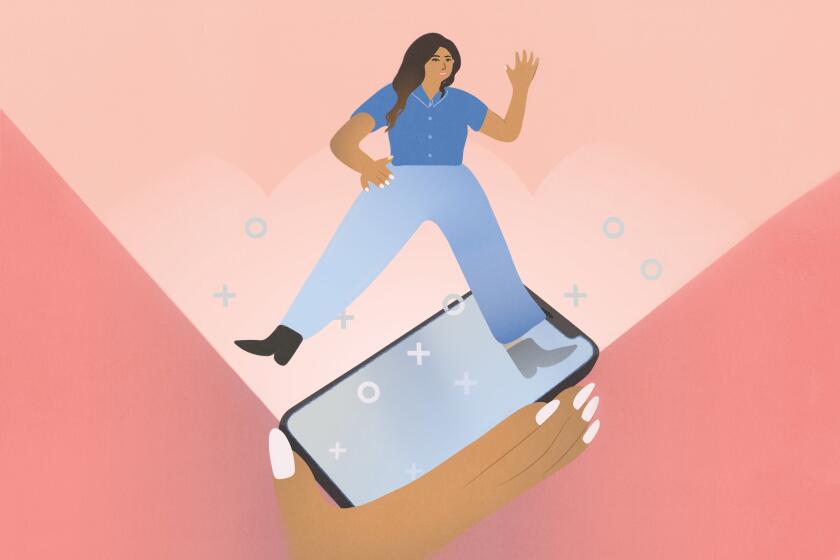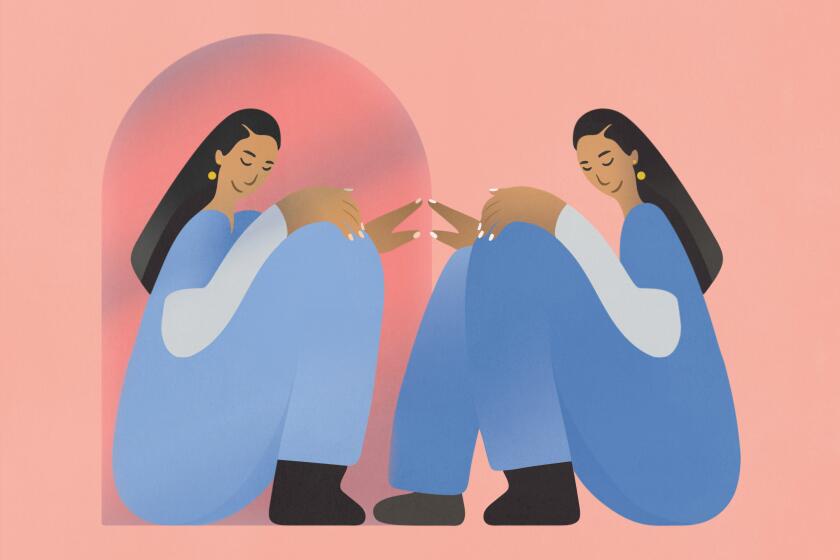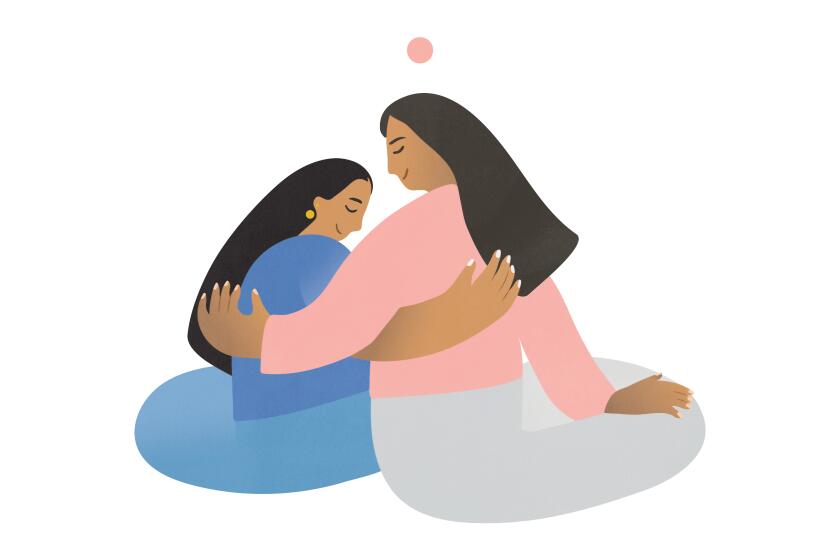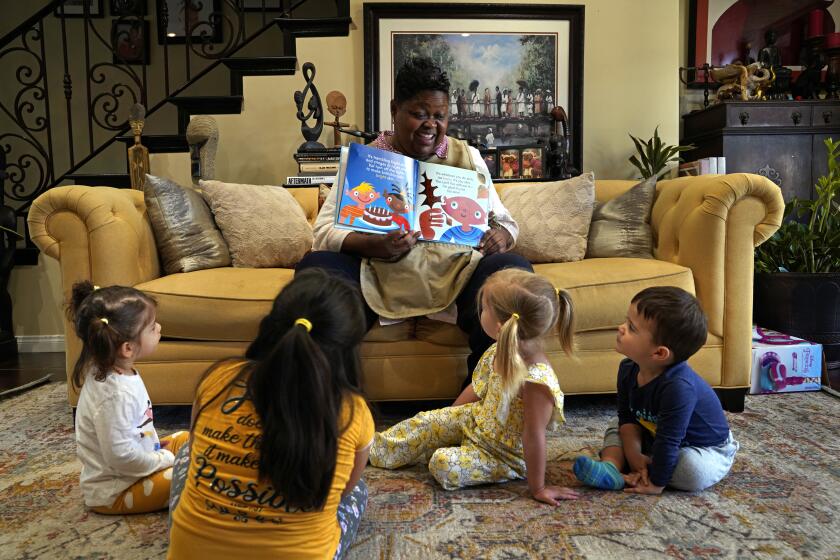Talking about mental health can be hard within Latino families. Here’s how to start
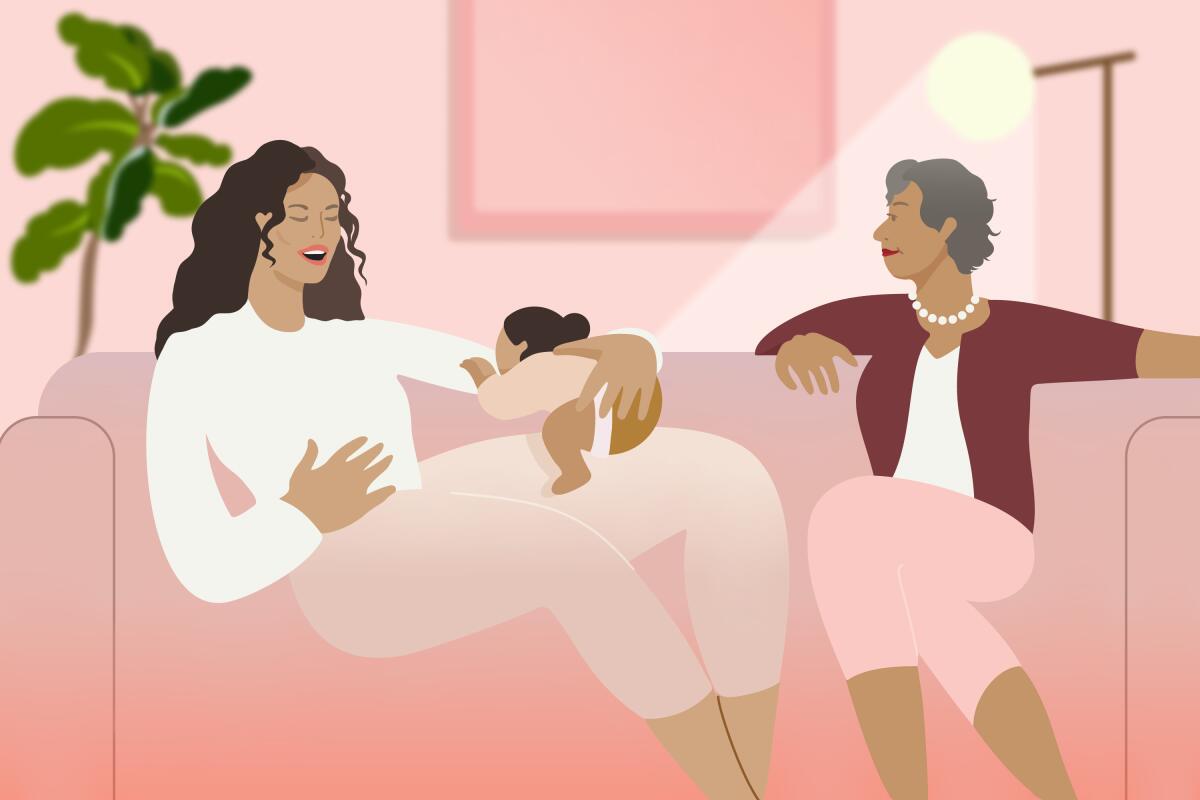
- Share via
Norma Fabian Newton had heard of other new mothers experiencing the “baby blues,” short-term sadness and anxiety. But when she had her first child in her early 30s, she described her experience as a “constant barrage of thoughts.”
“I was constantly thinking, ‘I’m not equipped to be a parent, I hate myself, or I hate this decision,’” she said.
“In so many ways I had everything, and yet I felt so empty and so low.”
Several months after giving birth, Newton reached out to her gynecologist in Los Angeles for help. The doctor explained that the feelings Newton was experiencing were common. She was showing signs of postpartum depression, a term she had never heard.
Through therapy sessions, she would later realize part of the reason she didn’t know how to deal with her postpartum depression was because the people in her life didn’t openly talk about their mental health struggles.
That made Newton feel invisible — especially when she was struggling.
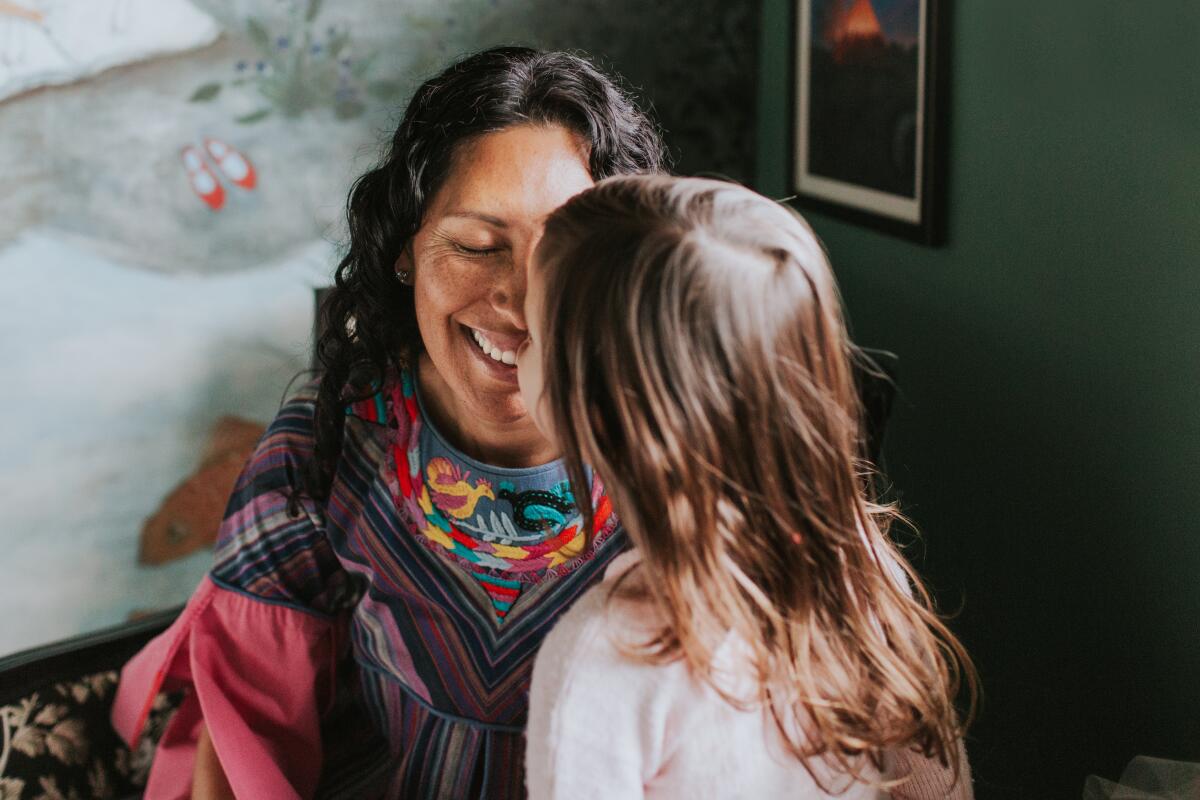
More than a decade of therapy helped Newton — founder of Fabian Flores, a Latinx-focused bookseller and publisher — understand that others weren’t intentionally dismissing her feelings. Her parents, in particular, were “doing the best they could for their family and were also dealing with their own trauma.”
“That, in some ways, really paralyzed them from getting the help they needed,” she said.
Even though she wants to start conversations about mental health with her family members, especially the older generation, it has been a challenge.
In that, she’s not alone.
“We do need to be mindful because there’s a lot of unaddressed mental health concerns in many multigenerational homes, so we don’t want to just dive right in,” Adriana Alejandre, founder of Latinx Therapy and a trauma therapist, said.
The Times spoke with Alejandre and others to understand how and when to start conversations about mental health, how to set expectations and why these conversations are important.
Identifying culturally competent mental health professionals can help your healing journey. Here’s how to find one who meets your needs.
Where to start
It’s important to normalize mental health conversations at home, but the first step is becoming more comfortable with talking about mental health yourself.
Growing up, Newton said feelings were regarded as something that needed to be overcome as quickly as possible. If she was crying, she was told to stop. She learned to numb her feelings, which eventually manifested as anxiety and depression.
Twice before she experienced postpartum depression, Newton tried to see a therapist. After becoming a mother, though, she committed to seeing one three times a week. Through that process, she learned to recognize what she was feeling and take the time to reflect on why she felt that way.
A huge change, she said, was letting go of shame.
“I see it as an opportunity to learn and to heal,” she said.
Once she opened herself to these learning opportunities, she wanted to share it with her family, especially her mom.
First generation trauma is an emerging term in the Latino community, with people talking about it on social media. Here’s how it affects children of immigrant parents.
How to start
When you’re ready to have these conversations with your family, Alejandre recommends first thinking about the person or people you want to address.
Don’t assume you know what your family will say, because it won’t lead to a productive conversation, she said. Have a plan and go into it with minimal expectations.
Your plan can include how and when you’re going to start the conversation; the topics you want to cover; and the questions you want to ask.
Alejandre also suggested creative ways to get this conversation topic on a family member’s radar. You could share a relatable meme or TikTok video. Or ask an open-ended question that you’re not tied to, for example: Qué opinas de la terapia? What do you think about therapy?
Stories and advice about Latino mental health
What happens next?
Take the time to reflect on the other person’s responses. This will help you understand whether the person you want to talk to is ready to continue this conversation.
If so, ask yourself, “What do I need to bring to this dialogue?”
It’s possible they aren’t ready or interested in having the conversation. This can be disappointing, and it can help to have a supportive person or community (outside of your family) that you can vent to about this.
Understanding why it’s difficult (and why that’s OK)
The National Alliance on Mental Illness website states the Hispanic/Latinx community “can be very private and may not want to publicly talk about” the challenges in their homes or in their lives. This can continue the cycle of stigma or taboo view of mental health in the community.
But talking about mental health (whether you’re looking for support, updating your family about seeking help, or having a general conversation) will be different in every Latino household and community.
The Latin American diaspora that makes up Southern California’s Latino population includes people from different ethnicities, homelands, cultures and experiences. To make things more complex, homes often include multiple generations under one roof. All of these factors influence how a family deals with mental health challenges.
A recent report by the Substance Abuse and Mental Health Services Administration (SAMHSA) found the COVID-19 pandemic has highlighted nationwide racial and ethnic disparities in access to behavioral healthcare. While the rates of behavioral disorders for Black people and Latinos are not significantly different from other populations, these communities “have substantially lower access to mental health and substance-use treatment services.”
Of the 6.9 million adults in the report’s nationwide survey who experienced any type of mental illness, two-thirds did not receive treatment.
Sergio Aguilar-Gaxiola, director of UC Davis Center for Reducing Health Disparities said if people do step into a clinical office or medical setting, studies show more than 50% of Latino clients do not return for a second visit.
“If they don’t feel that they were being treated with respect and dignity, and the [clinical] setting was not relatable, then they will not return,” he said.
Personal essays, insight from experts and resources to help manage mental health.
The way someone expresses how they’re feeling or their symptoms might not match terminology in the Diagnostic and Statistical Manual of Mental Health Disorders, also called the DSM-5 — a manual for assessment and diagnosis of mental illness.
Someone could use “chiripiorca” instead of “panic attack,” or say “me duele el corazon” (“my heart is hurting”) to explain emotional distress. Expressions like those don’t perfectly translate to the traditional mental health system, especially if a provider doesn’t understand the person’s language or culture. In this scenario, a person could feel that they’re not being heard or that the provider is unable to help them.
Mental health stigma within Latino communities is often characterized as Latinos being resistant to talking about mental health, said Pilar Hernández-Wolfe licensed marriage and family therapist and author of “A Borderlands View on Latinos, Latin Americans, and Decolonization: Rethinking Mental Health.”
The relationship that Latinos have with mental health is more complex and complicated.
“We must attend to the ways in which class and education and traditions from where people come from play in this relationship,” she said.
Aguilar-Gaxiola said there are three types of barriers to talking about, learning about, or receiving mental healthcare:
- Individual barriers, which include cultural influences, exposure to stressful situations, and knowledge or access to the mental health system.
- Community barriers, which refers to communities that lack access to culturally and linguistically appropriate services.
- Societal barriers, which include poor living conditions, inadequate transportation and social exclusion (feeling like you don’t belong in a community or to a larger society).
Una lista de líneas telefónicas de ayuda en caso de crisis, asesoramiento de bajo coste y de escala variable, grupos de apoyo y servicios de atención plena y meditación
In a household, younger generations are generally more open to talking about their mental health. Hernández-Wolfe reminds her younger clients that they often aren’t aware of family conflicts that might stop a parent or grandparent from wanting to have these conversations.
In some homes, a parent’s, aunt’s, uncle’s or grandparent’s experience of leaving their country of origin and immigrating to the U.S. might also affect their ability or desire to talk about mental health.
“Their parents are oftentimes carrying too much intergenerational trauma,” Hernández-Wolfe said. ”The idea of going to talk to somebody about that is unbearable, because if you open that wound there is going to be a whole river flowing,” she said. Or maybe they’re afraid of being labeled “loco,” she added.
There’s also a financial barrier to care. According to the National Alliance on Mental Illness, 17% of Hispanic/Latinx people in the U.S. live in poverty, compared with 8.2% of non-Hispanic whites. A family might not have the financial means to seek therapy let alone afford a doctor’s visit.
If they do visit a therapist or a counselor, a lack of relatability, cultural understanding and a language gap could discourage that person from seeking mental health services.
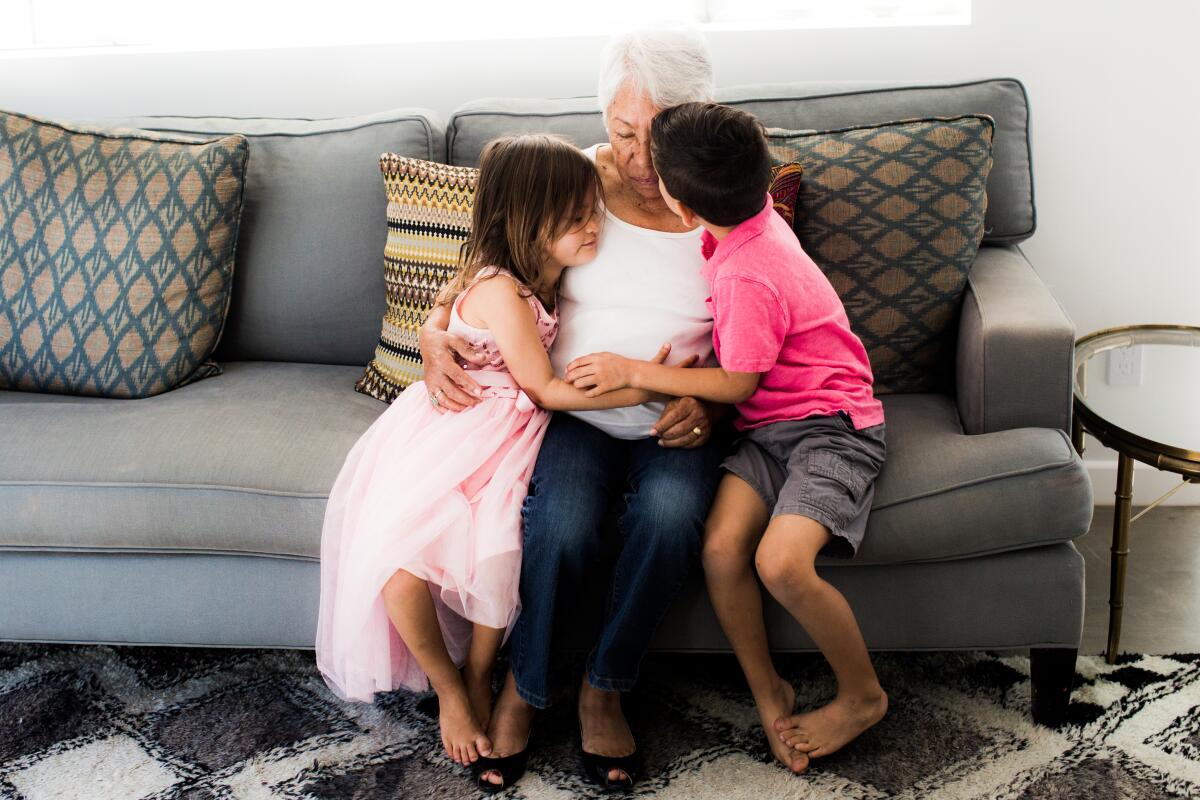
Why this is important
In an interview, Newton teared up when talking about her 11-year mental health journey.
“I am such an advocate for sharing stories, for being visible, because I think that when we share our stories we are able to not only heal ourselves but heal the community,” she said.
Newton has been able to share helpful tools for managing anxiety with her mom. She’s learning where her mother is already set in her views, and where she might be more flexible.
“At the end of the day, I have also come to realize that she is who she is, and her journey, her age and her experience is different than mine,” she said.
When you’re worried yourself, how can you make your child feel comfortable talking to you about their mental health struggles?
While she’s glad she can share what she’s learned through therapy with her mother, she’s even happier to be able to talk about mental health with her children.
“I’m in constant conversation with my children about helping them identify and sort through their own feelings ... really just making sure they feel like they’re not alone,” Newton said.
She shares with them that she sees a therapist and how it helps her. She emphasizes that there are a lot of ways they can take care of their mental health, such as talking to a friend and getting enough sleep.
“The ability to engage in conversation with my children about these issues is everything because I feel like I am setting them up for success in a way that I never experienced,” she said. “And I hope they can take it further.”
About The Times Utility Journalism Team
This article is from The Times’ Utility Journalism Team. Our mission is to be essential to the lives of Southern Californians by publishing information that solves problems, answers questions and helps with decision making. We serve audiences in and around Los Angeles — including current Times subscribers and diverse communities that haven’t historically had their needs met by our coverage.
How can we be useful to you and your community? Email utility (at) latimes.com or one of our journalists: Jon Healey, Ada Tseng, Jessica Roy and Karen Garcia.
More to Read
Sign up for The Wild
We’ll help you find the best places to hike, bike and run, as well as the perfect silent spots for meditation and yoga.
You may occasionally receive promotional content from the Los Angeles Times.
